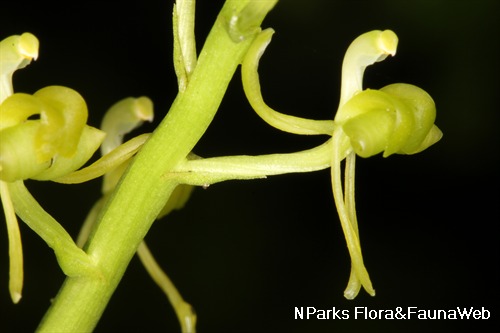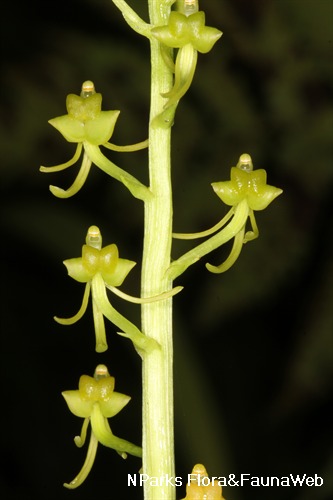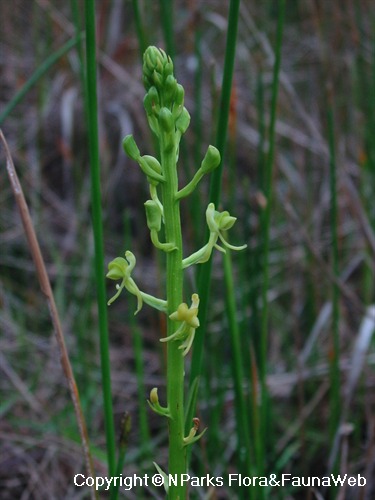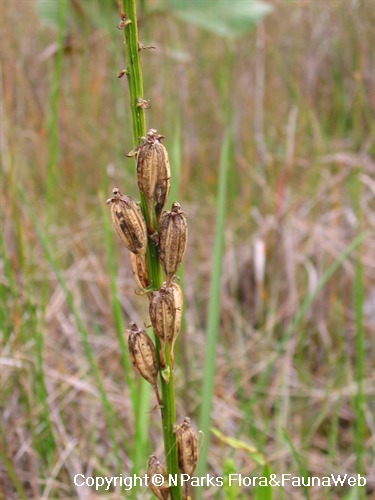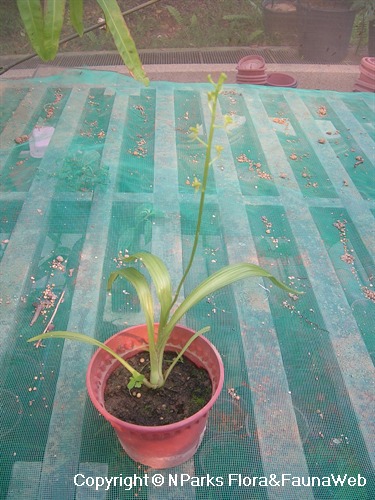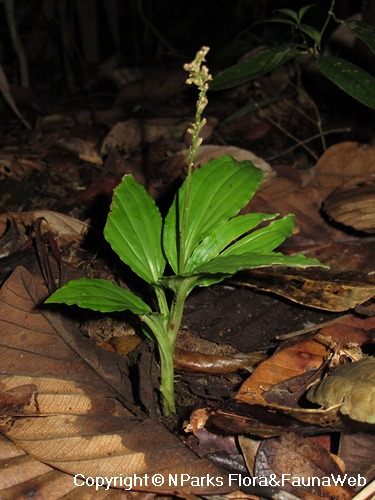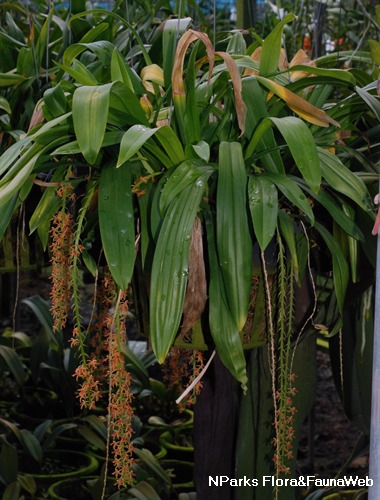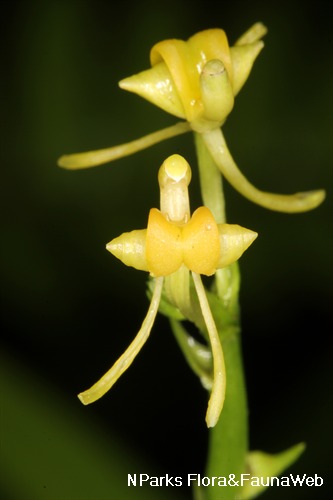
Back
Liparis ferruginea Lindl.
| Family Name: | Orchidaceae |
| Synonyms: | Liparis pratensis |
| Common Name: | Bog Orchid, 锈色羊耳蒜 |
Name
Classifications and Characteristics
| Plant Division | Angiosperms (Flowering Seed Plants) (Monocotyledon) |
|---|---|
| Plant Growth Form | Shrub |
Biogeography
| Native Distribution | Southern China, Nepal, Indo-China, Thailand, Peninsular Malaysia, Singapore, Sumatra, Java and Borneo. |
|---|---|
| Native Habitat | Terrestrial (Riverine, Grassland / Savannah/ Scrubland, Disturbed Area / Open Ground) |
| Preferred Climate Zone | Tropical, Sub-Tropical / Monsoonal |
| Local Conservation Status | Native to Singapore (Critically Endangered (CR)) |
| CITES Protection | True |
Description and Ethnobotany
| Growth Form | It is a herbaceous terrestrial orchid. |
|---|---|
| Foliage | Each plant has 4 - 6 narrow, linear leaves (30 cm long) with parallel venation. Smooth, glossy leaves have entire leaf margin. |
| Stems | It has a horizontal underground stem known as a rhizome. |
| Flowers | Light yellow green flowers are arranged in a raceme inflorescence (spike-like inflorescence with stalked flowers). The inflorescence stalk is held erect and grows more than 0.5 m long. |
| Fruit | The fruits is a capsule. |
| Habitat | Usually found near ponds, lakes or on open waterlogged areas. This species was once thought to be extinct but was rediscovered in 2008 and now located only in the eastern part of Singapore. |
| Cultivation | It can be propagated by seed. |
| Etymology | The genus Liparis means greasy, referring to the glossy leaves of species in this genus. The species epithet ferruginea means rusty brown in colour. |
Landscaping Features
| Landscaping | It is suitable for waterlogged soils in full sun, open areas. It can also be planted along the edges of water bodies such as ponds. |
|---|---|
| Desirable Plant Features | Ornamental Flowers |
| Landscape Uses | Parks & Gardens, Small Gardens, Riverine, Pond / Lake / River, Marsh / Bog |
| Thematic Landscaping | Water Garden, Marsh Garden |
Fauna, Pollination and Dispersal
| Pollination Method(s) | Biotic (Fauna) |
|---|---|
| Seed or Spore Dispersal | Abiotic |
Plant Care and Propagation
| Light Preference | Full Sun |
|---|---|
| Water Preference | Lots of Water |
| Plant Growth Rate | Moderate |
| Rootzone Tolerance | Moist Soils, Waterlogged Soils, Fertile Loamy Soils |
| Propagation Method | Seed, Tissue Culture |
Foliar
| Foliage Retention | Evergreen |
|---|---|
| Mature Foliage Colour(s) | Green |
| Mature Foliage Texture(s) | Smooth, Glossy / Shiny |
| Foliar Type | Simple / Unifoliate |
| Foliar Arrangement Along Stem | Rosulate / Rosette |
| Foliar Attachment to Stem | Sessile |
| Foliar Shape(s) | Non-Palm Foliage (Linear) |
| Foliar Venation | Parallel |
| Foliar Margin | Entire |
| Foliar Apex - Tip | Acute |
| Foliar Base | Clasping |
| Typical Foliar Area | Notophyll ( 20.25cm2 - 45 cm2 ) |
| Leaf Area Index (LAI) for Green Plot Ratio | 3.5 (Shrub & Groundcover - Monocot) |
Floral (Angiosperm)
| Flower & Plant Sexuality | Bisexual Flowers |
| Flower Grouping | Cluster / Inflorescence |
|---|---|
| Flower Location | Terminal |
| Flower Symmetry | Bilateral |
| Inflorescence Type | Raceme |
| Flower Colour(s) Remarks | Light Yellow Green |
Fruit, Seed and Spore
| Mature Fruit Colour(s) | Brown, Green |
|---|---|
| Fruit Classification | Simple Fruit |
| Fruit Type | Dehiscent Dry Fruit , Capsule |
References
| References | Yong J, Tan PY, Nor Hafiz Hassan, Tan SN. 2010. A Selection of Plants for Greening of Waterways and Waterbodies in the Tropics. Singapore: Chung Printing . 480 pp. |
|---|
Image Repository
Others
| Master ID | 903 |
|---|---|
| Species ID | 2197 |
| Flora Disclaimer | The information in this website has been compiled from reliable sources, such as reference works on medicinal plants. It is not a substitute for medical advice or treatment and NParks does not purport to provide any medical advice. Readers should always consult his/her physician before using or consuming a plant for medicinal purposes. |

